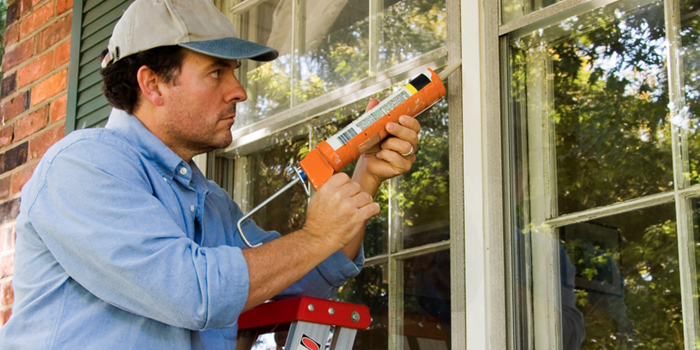
Air Sealing
A “drafty” house is the result of air leakage, or air infiltration, through cracks and openings. While many are easy to locate, such as around windows and doors, many are hidden in attics and crawlspaces, behind the stairs, around outlets and openings for appliances, and so on. Properly sealing these leaks with caulk, spray foam, and weather stripping can greatly impact both your comfort and your utility bills as the furnace and air conditioner have to work less hard to keep your home at the proper temperature. (Note: that sealing leaks will not solve any problems related to lack of insulation which is needed to reduce heat loss.) Please visit Energy Savers for additional information.
Using an air sealing expert to complete this work can be important for several reasons – they should have the diagnostic tools to detect the hidden leaks that are difficult to locate (for example, infrared camera and blower door equipment), they should know the proper techniques to complete the work, and be able to test afterward to determine whether additional ventilation is required for combustion safety purposes. While some homeowners may be concerned about a too tightly sealed house, this is not likely the case with older homes. Please visit Energy Star for additional information.
Most experts agree that caulking and weather stripping alone should pay for itself in energy savings within a year. (Energy Savers) For particularly “leaky” homes, air infiltration may account for 30 percent or more of the home’s heating and cooling costs and contribute to moisture, dust, insect and other issues with the home (DOE/Oak Ridge National Laboratory).
To estimate your potential to save energy and money by installing this improvement, please see the U.S. Department of Energy’s Home Energy Savercalculator.
To check if there are any incentives or rebates available for this product in your area, please see the Database of State Incentives for Renewables and Efficiency (DSIRE).
Specification
Contractors should follow the Building Performance Institute (“BPI”) standards, Energy Star guidelines and/or ASHRAE 62.2-7 2007 Ventilation Standards for air sealing and weatherization.
It is mandatory that air sealing levels be measured by a blower door test before and after improvements are made. A copy of the blower door test results (CFM50) before and after improvement products are installed must be included with the Funding Request Form. Mechanical ventilation should be installed if natural ventilation is below the minimum levels specified in ASHRAE 62.2-7 2007 Ventilation Standards.
